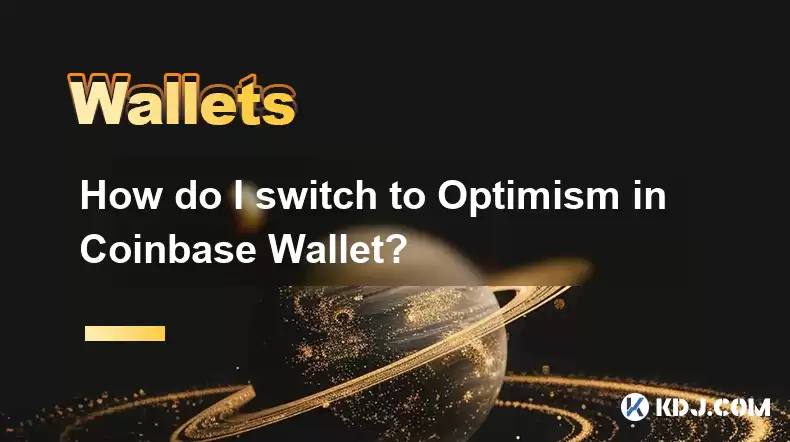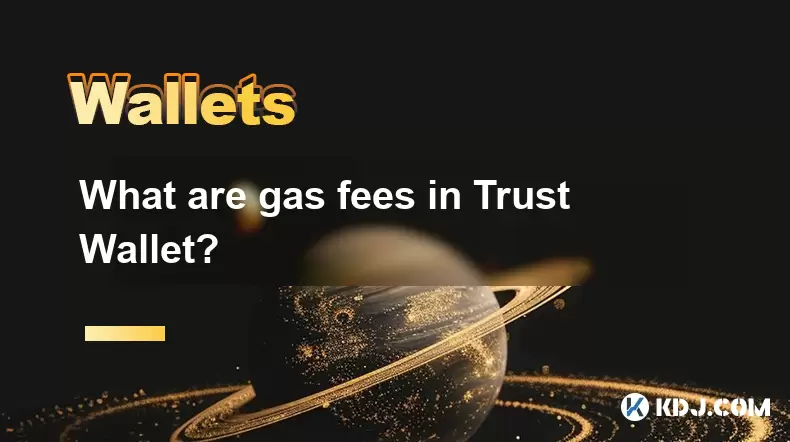-
 Bitcoin
Bitcoin $114400
1.32% -
 Ethereum
Ethereum $3499
2.20% -
 XRP
XRP $2.922
4.26% -
 Tether USDt
Tether USDt $0.0000
0.03% -
 BNB
BNB $752.6
1.53% -
 Solana
Solana $161.8
1.64% -
 USDC
USDC $0.9999
0.01% -
 TRON
TRON $0.3267
1.32% -
 Dogecoin
Dogecoin $0.1991
3.02% -
 Cardano
Cardano $0.7251
3.29% -
 Hyperliquid
Hyperliquid $38.32
3.36% -
 Stellar
Stellar $0.3972
7.58% -
 Sui
Sui $3.437
2.74% -
 Chainlink
Chainlink $16.29
3.65% -
 Bitcoin Cash
Bitcoin Cash $545.3
3.70% -
 Hedera
Hedera $0.2482
7.49% -
 Ethena USDe
Ethena USDe $1.001
0.03% -
 Avalanche
Avalanche $21.40
2.02% -
 Toncoin
Toncoin $3.579
1.56% -
 Litecoin
Litecoin $109.3
2.20% -
 UNUS SED LEO
UNUS SED LEO $8.951
-0.18% -
 Shiba Inu
Shiba Inu $0.00001220
2.75% -
 Polkadot
Polkadot $3.613
2.99% -
 Uniswap
Uniswap $9.173
3.78% -
 Monero
Monero $302.6
2.62% -
 Dai
Dai $0.0000
0.00% -
 Bitget Token
Bitget Token $4.320
1.52% -
 Pepe
Pepe $0.00001048
3.40% -
 Cronos
Cronos $0.1314
4.33% -
 Aave
Aave $259.4
3.54%
How do I switch to Optimism in Coinbase Wallet?
Switching to Optimism in Coinbase Wallet is easy: add the network, switch to it, and enjoy faster, cheaper Ethereum transactions.
Apr 25, 2025 at 05:21 am

Switching to Optimism in Coinbase Wallet is a straightforward process that allows you to interact with the Optimism network, a layer 2 scaling solution for Ethereum. This guide will walk you through the steps to switch to Optimism, ensuring you can take advantage of faster and cheaper transactions.
Understanding Optimism and Its Benefits
Optimism is a layer 2 scaling solution built on top of Ethereum. It aims to increase transaction speed and reduce costs by processing transactions off the main Ethereum chain and then settling them back on the mainnet. By using Optimism, you can enjoy the benefits of Ethereum's security and decentralization while experiencing improved performance.
Preparing Your Coinbase Wallet
Before you switch to Optimism, ensure that your Coinbase Wallet is set up and ready. If you haven't already, download the Coinbase Wallet app on your mobile device or access it through the browser extension. Make sure you have your wallet's recovery phrase securely stored, as you will need it to access your funds on different networks.
Adding Optimism to Coinbase Wallet
To switch to Optimism, you need to add the network to your Coinbase Wallet. Follow these steps:
- Open Coinbase Wallet: Launch the Coinbase Wallet app on your mobile device or access it through the browser extension.
- Navigate to Settings: Tap on the settings icon, usually located in the top right corner of the app.
- Select Active Network: Scroll down and find the "Active Network" option.
- Add Custom Network: Tap on "Add Network" or "Custom Network."
- Enter Network Details: You will need to enter the following details for Optimism:
- Network Name: Optimism
- RPC URL: https://mainnet.optimism.io
- Chain ID: 10
- Symbol: ETH
- Block Explorer URL: https://optimistic.etherscan.io
- Save the Network: After entering the details, tap "Save" or "Add" to add Optimism to your list of networks.
Switching to Optimism
Once you have added Optimism to your Coinbase Wallet, you can easily switch to it:
- Open Coinbase Wallet: Launch the app or access it through the browser extension.
- Navigate to Settings: Tap on the settings icon.
- Select Active Network: Scroll down to the "Active Network" option.
- Choose Optimism: From the list of available networks, select "Optimism."
- Confirm Switch: Confirm that you want to switch to the Optimism network.
Verifying the Switch
After switching to Optimism, it's important to verify that you are indeed on the correct network:
- Check Network Indicator: Look for the network indicator at the top of the Coinbase Wallet app or browser extension. It should now display "Optimism."
- Verify Transaction Fees: When you initiate a transaction, check the estimated gas fees. They should be significantly lower than on the Ethereum mainnet, indicating you are on Optimism.
- Use a Dapp: Try accessing a decentralized application (dapp) that supports Optimism. If it recognizes your wallet as being on the Optimism network, you have successfully switched.
Interacting with Optimism
Now that you are on the Optimism network, you can start interacting with dapps and making transactions. Here are some common activities you might want to perform:
- Sending and Receiving ETH: You can send and receive ETH on Optimism just like on the Ethereum mainnet. The process is the same, but the fees will be lower.
- Using Dapps: Many popular dapps have been deployed on Optimism. You can interact with them directly from your Coinbase Wallet.
- Bridging Assets: If you need to move assets between Ethereum and Optimism, you can use a bridge service. Coinbase Wallet supports bridging through its interface.
Troubleshooting Common Issues
Switching to Optimism is usually smooth, but you might encounter some issues. Here are some common problems and their solutions:
- Network Not Appearing: If Optimism does not appear in your list of networks, double-check the network details you entered. Ensure the RPC URL, Chain ID, and other details are correct.
- Transaction Failures: If a transaction fails, check the gas fees you set. Sometimes, setting the gas too low can cause transactions to fail. Adjust the gas and try again.
- Wallet Not Recognizing Optimism: If your wallet does not recognize Optimism, ensure you have the latest version of the Coinbase Wallet app or browser extension. Updating might resolve the issue.
Frequently Asked Questions
Q: Can I switch back to the Ethereum mainnet from Optimism in Coinbase Wallet?
A: Yes, you can switch back to the Ethereum mainnet at any time. Simply follow the same steps to switch networks, but select "Ethereum Mainnet" instead of "Optimism."
Q: Are there any risks associated with using Optimism?
A: While Optimism is designed to be secure, there are risks associated with any blockchain network. These include smart contract vulnerabilities and potential issues with the bridge between Ethereum and Optimism. Always use reputable dapps and keep your recovery phrase secure.
Q: Can I use other wallets to switch to Optimism?
A: Yes, other wallets like MetaMask also support switching to Optimism. The process is similar, but you will need to add the network details manually, just as you did with Coinbase Wallet.
Q: How do I know if a dapp supports Optimism?
A: You can check the dapp's official website or documentation to see if it supports Optimism. Many dapps will explicitly state their support for different networks, including Optimism.
Disclaimer:info@kdj.com
The information provided is not trading advice. kdj.com does not assume any responsibility for any investments made based on the information provided in this article. Cryptocurrencies are highly volatile and it is highly recommended that you invest with caution after thorough research!
If you believe that the content used on this website infringes your copyright, please contact us immediately (info@kdj.com) and we will delete it promptly.
- Kaspa, HBAR, and Cold Wallet: A New York Minute on Crypto's Latest Moves
- 2025-08-04 09:11:54
- Ethereum Whale Watch: Selling Pressure and Price Volatility
- 2025-08-04 09:11:54
- XRP ETF Mania: Teucrium's Crypto Triumph and the Altcoin Frenzy
- 2025-08-04 09:30:13
- Crypto Wallet Scam: A $900K Loss & What You Need to Know
- 2025-08-04 09:35:13
- Dogecoin's Wild Ride: Elliott Wave, Stochastic RSI, and What's Next, Ya Know?
- 2025-08-04 09:40:12
- Shiba Inu (SHIB), Crypto Investments, and the Meme Coin Evolution: What's the Deal?
- 2025-08-04 09:45:17
Related knowledge

What is a watch-only wallet in Trust Wallet?
Aug 02,2025 at 03:36am
Understanding the Concept of a Watch-Only WalletA watch-only wallet in Trust Wallet allows users to monitor a cryptocurrency address without having ac...

How to fix a stuck pending transaction in Trust Wallet?
Aug 03,2025 at 06:14am
Understanding Why Transactions Get Stuck in Trust WalletWhen using Trust Wallet, users may occasionally encounter a pending transaction that appears t...

What is a multi-coin wallet in Trust Wallet?
Aug 03,2025 at 04:43am
Understanding Multi-Coin Wallets in Trust WalletA multi-coin wallet in Trust Wallet refers to a digital wallet that supports multiple cryptocurrencies...

How to switch between networks in Trust Wallet?
Aug 02,2025 at 12:36pm
Understanding Network Switching in Trust WalletSwitching between networks in Trust Wallet allows users to manage assets across different blockchains s...

How to check my full transaction history on Trust Wallet?
Aug 02,2025 at 09:24am
Understanding Transaction History in Trust WalletTrust Wallet is a widely used non-custodial cryptocurrency wallet that supports a broad range of bloc...

What are gas fees in Trust Wallet?
Aug 04,2025 at 06:14am
Understanding Gas Fees in Trust WalletGas fees in Trust Wallet refer to the transaction costs required to execute operations on a blockchain network. ...

What is a watch-only wallet in Trust Wallet?
Aug 02,2025 at 03:36am
Understanding the Concept of a Watch-Only WalletA watch-only wallet in Trust Wallet allows users to monitor a cryptocurrency address without having ac...

How to fix a stuck pending transaction in Trust Wallet?
Aug 03,2025 at 06:14am
Understanding Why Transactions Get Stuck in Trust WalletWhen using Trust Wallet, users may occasionally encounter a pending transaction that appears t...

What is a multi-coin wallet in Trust Wallet?
Aug 03,2025 at 04:43am
Understanding Multi-Coin Wallets in Trust WalletA multi-coin wallet in Trust Wallet refers to a digital wallet that supports multiple cryptocurrencies...

How to switch between networks in Trust Wallet?
Aug 02,2025 at 12:36pm
Understanding Network Switching in Trust WalletSwitching between networks in Trust Wallet allows users to manage assets across different blockchains s...

How to check my full transaction history on Trust Wallet?
Aug 02,2025 at 09:24am
Understanding Transaction History in Trust WalletTrust Wallet is a widely used non-custodial cryptocurrency wallet that supports a broad range of bloc...

What are gas fees in Trust Wallet?
Aug 04,2025 at 06:14am
Understanding Gas Fees in Trust WalletGas fees in Trust Wallet refer to the transaction costs required to execute operations on a blockchain network. ...
See all articles

























































































